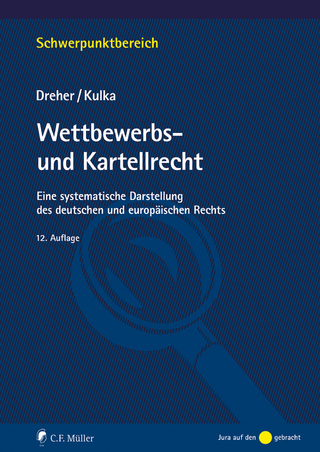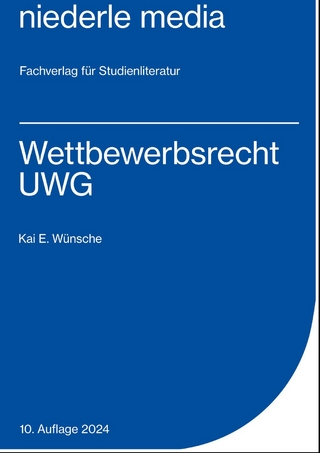
Competition Law’s Innovation Factor
Hart Publishing (Verlag)
978-1-5099-3189-7 (ISBN)
Viktoria H S E Robertson is Associate Professor at the University of Graz.
PART I
MARKET DEFINITION AND INNOVATION
1. Introduction
I. Innovation and the Relevant Market: The Issues at Stake
II. The Parameters of this Study
III. The Course of this Study
2. The Functions of the Relevant Market in EU Competition and US Antitrust Law
I. The Relevant Product Market under US Antitrust Law
II. The Relevant Product Market under EU Competition Law
III. The Functions of the Relevant Product Market in the EU and the US: A First Comparative Look
IV. No More Antitrust Market Definition?
V. Conclusion
3. Innovation and Competition Law
I. The Notion of Innovation
II. Distinctive Features of Innovative Markets as Challenges for Antitrust Market Definition
III. Perspectives on Incorporating Dynamic Competition into Antitrust
IV. Conclusion
PART II
THE INNOVATION FACTOR IN MARKET DELINEATION UNDER EU COMPETITION AND US ANTITRUST LAW
4. Innovative Product Markets
I. Innovative Products as a Challenge for Market Definition
II. Product Differentiation Based on Innovation
III. Innovation and the Time Horizon for Market Definition
IV. The Definition of Future Markets
V. Conclusion
5. Beyond Marked Definition: Potential Competition, R&D Markets and Innovation Competition
I. Potential Competition in Innovative Markets
II. The US Innovation Market Approach
III. The Emergence of Innovation Competition
IV. Conclusion
6. Intellectual Property Rights
I. Market Definition and Intellectual Property Rights
II. The Move Away from Intellectual Property Rights Seen as Conferring Market Power
III. Market Definition in the Presence of Intellectual Property Rights
IV. Technology Markets and the Licensing of Intellectual Property Rights
V. Standard-Essential Patents and Product Market Definition: Just Another Technology Market?
VI. Conclusion
7. Innovative Aftermarkets
I. Policy Documents on Delineating Aftermarkets
II. The Relationship between Primary and Secondary Markets
III. Proprietary Primary Markets and Proprietary Aftermarkets
IV. The Special Case of Aftermarkets in Franchises
V. Conclusion
8. Platform Markets
I. Market Definition in Platforms
II. Free Services in Innovative Platform Markets
III. Delineating Multi-sided Markets
IV. Conclusion
9. Further Issues Concerning Innovation and Market Delineation
I. Standard Economic Tests and Innovation
II. Innovation and Geographical Market Definition
III. Conclusion
Conclusions on Part II: Accounting for Innovation When Delineating
PART III
RECONCEPTUALISING THE LEGAL FRAMEWORK FOR DELINEATING ANTITRUST MARKETS IN DYNAMIC CONTEXTS
10. An Antitrust Framework for Delineating Dynamic Markets
I. A Typology for Reconceptualising the Market Definition Framework
II. Options for Market Definition Guidance in the Presence of Innovation
III. Choosing a Market Definition Framework
IV. The Guidance Options as a Way Towards Convergence in Market Definition?
V. Conclusion
11. Reflections: Is Market Definition Too Big to Fail – or is it Failing Innovation?
| Erscheinungsdatum | 10.02.2020 |
|---|---|
| Reihe/Serie | Hart Studies in Competition Law |
| Verlagsort | Oxford |
| Sprache | englisch |
| Maße | 156 x 234 mm |
| Gewicht | 728 g |
| Themenwelt | Recht / Steuern ► EU / Internationales Recht |
| Recht / Steuern ► Wirtschaftsrecht ► Wettbewerbsrecht | |
| ISBN-10 | 1-5099-3189-9 / 1509931899 |
| ISBN-13 | 978-1-5099-3189-7 / 9781509931897 |
| Zustand | Neuware |
| Haben Sie eine Frage zum Produkt? |
aus dem Bereich


